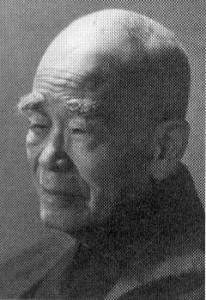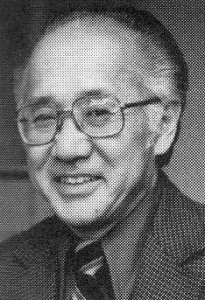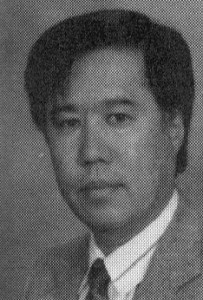
Buddha of Infinite Light
D. T. Suzuki
Shambhala: Boston, 1998
96 pp., $16.95 (cloth)
River of Fire, River of Water
An Introduction to the Pure Land Tradition of Shin Buddhism
Taitetsu Unno
Doubleday: New York, 1998
272 pp., $12.00 (paper)
Ocean
An Introduction to Jodo-Shinshu Buddhism in America
Kenneth K. Tanaka
WisdomOcean: Berkeley, 1997
288 pp., $14.95 (paper)
Many, many kalpas ago a monk by the name of Dharmakara became first a bodhisattva and then the Buddha Amitabha, the Buddha of Infinite Light, having made the vow that any beings who uttered his name would be reborn in his Pure Land, a splendid paradise from which liberation can be easily and speedily attained. The teachings appeared first in India, then in China, Korea, Japan, and Vietnam. It spread to Tibet as well, particularly through the yogic practice of phowa, which directs consciousness to rebirth in the Pure Land at the time of death. In fact, the Pure Land teachings became—and remain—the most widely followed school of Buddhism in the world.
Yet Pure Land Buddhism, and the teachings connected with it, are oddly absent from the emerging new American Buddhism, the one notable exception being the marginalized Japanese-American congregations known as the Buddhist Churches of America (Shin or Jodo Shinshu, True Pure Land) and the closely related Pure Land (Jodoshu) congregations located mainly in Hawaii. This neglect is even stranger when we realize that Pure Land teachings have been present in North America longer than any other school. They probably arrived in some form with the first Chinese immigrants in the 1850s. In 1897, Japanese immigrants founded the first Buddhist sangha in North America—the San Francisco based Young Men’s Buddhist Association—and commenced to publish the periodical The Light of Dharma. This early tender growth, however, was stunted by the frost of racism. Further immigration was banned, and Japanese immigrants were barred from owning property. Religious institutions were the one exception, and Jodo Shinshu temples, refuges from a hostile society, were soon serving as community and cultural centers. The traumatic imprisonment of Japanese-Americans during World War II was, in a sense, the culmination of a tendency begun long ago.

Three recently published books, however, give rise to the hope that Pure Land Buddhism is finally beginning to take its place at the crowded potluck of American Buddhism. The first, Buddha of Infinite Light, by D. T. Suzuki, is a newly re-edited collection of talks Suzuki gave at the American Buddhist Academy in New York City in 1958, when he was eighty-eight years old. D. T. Suzuki’s name is nearly synonymous with Zen, but Suzuki taught at Otani University, which is affiliated with Shin. What is more important, Shin was a central part of his own spiritual life. The second book, River of Fire, River of Water: An Introduction to the Pure Land Tradition of Shin Buddhism, is by Taitetsu Unno, who teaches religion at Smith College, and the third, Ocean: An Introduction to Jodo-Shinshu Buddhism in America, is by Shin minister and Buddhist scholar Kenshin Kenneth Tanaka. All of them reveal Pure Land—especially in its Shin Buddhist manifestation—as a tradition that is both direct and profound. They also make clear that Shin Buddhist practice and customs have a valuable, perhaps crucial, contribution to make to the project of growing a new American Buddhism.
In medieval Japan, Shin teaching was open and freely available to those who had been excluded from the dharma—illiterate peasants, including women, and those whose livelihood involved impure activities, such as fishermen, hunters, butchers, prostitutes, and thieves. In fact, the popularity of this new teaching so threatened both the Imperial Court and the existing Buddhist establishment—which was scholastic, aristocratic, and monastic—that Honen, who founded the first independent Pure Land school in Japan in 1175—was exiled, along with his chief disciple, Shinran Shonin. Shinran susequently broke with tradition by marrying and raising a family, and establishing a truly lay Buddhist tradition.

At first glance Shin might seem puzzling to Westerners who have grown up in the meditation-powered traditions of Zen, vipassana, and Tibetan tantra. All these, at least as practiced recently in North America, are based on achieving liberation through a strenuous, even athletic, meditation practice. Even though such traditions may point to or culminate in an effortless practice, this is realized only after intensive practice. In Japan, such an approach is said to be based on jiriki, or “self-power.”
The Pure Land tradition, which is based on tariki, or “other-power,” turns this view inside out. Its approach does not depend on practices of any kind—neither ethical, meditative, nor devotional—for any attainment achieved through self-power is inevitably tainted and distorted by self-interest. According to Suzuki, Shin is “more difficult really to understand than other teachings of Buddhism.” The difficulty is beautifully expressed in a poem dictated by an illiterate woman, a myokonin (literally “a rare good person”)—one of the humble ordinary men and woman who exemplify the Shin way of life. (“The common denominator of all myokonin,” Unno tells us, “is a profound sense of thankfulness.”)
What I was imagining to be other-power
was none other than self-power.
Trying to avoid the path of evil
and constantly seeking the Pure Land,
this thought too was nothing but self-power.
“Trying to get rid of self-power is also self-power,” comments Suzuki. “One then asks in despair, ‘What am I to do?’ That is the real question and it is an impasse through which we all must pass.”
Taitetsu Unno’s River of Fire, River of Water suggests the profundity of the Shin response to this and other spiritual questions. Here, for example, is a passage explicating the recitation of the nembutsu, the words that occupy the center of Shin teaching: “Namu,” explains Professor Unno, “is the lost wandering self, seeking a way to realize its fullest potential. Amida-butsu or Amida Buddha is great compassion that calls all lost and delusory beings to itself. When fully grounded in such a compassion, our flowering as a true, real, and sincere person takes place naturally and spontaneously.” Thus other-power “is the working of great compassion that gives itself completely to each form of life.” What at first might seem like a dualistic teaching is revealed instead as a teaching that “operates at the very foundation of life, nullifying all our dualistic calculations.”

Kenshin Kenneth Tanaka’s introduction to Shin, Ocean, presented as a dialogue, is written simply and clearly enough to serve as an introductory primer for high school students. This format results in a book whose modest charm reveals much about the Shin approach as practiced by a working minister in contemporary America.
Tanaka is especially interesting when he writes about the relationship between Shin and other Buddhist traditions in America. One reason Shin has so far not played more of a role in the emerging tradition of American Buddhism, suggests Tanaka, lies in its resemblance to the theistic religions so many Americans have left for Buddhism. But this similarity is largely superficial. To begin with, Amida is not a creator god, but “the ‘spiritual power’ that we experience as understanding and caring in our lives.” Jodo Shinshu Buddhists, Tanaka notes, “do not regard Amida as a divine being with whom they maintain an on-going relationship. They realize their essential oneness with Amida in the oral recitation, for Amida is none other than the name, Namu Amida Butsu.”
Tanaka also illuminates the struggles of contemporary American dharma practitioners. “In the West, the heroic model of Buddhism predominates,” he writes. “It is characterized by the assertive, ascetic, serious, non-familial, individualistic, and extraordinary. However, such a model is difficult for those who cannot and do not want to forsake the world, their family and work. Surely,” he suggests, “there is room for other Buddhist models for North Americans to adopt.”
Indeed, Jodo Shinshu teachings do provide another approach—one that, as Tanaka writes, “is more receptive than assertive, more sensitive than ascetic, more humorous than serious, more family-oriented, more community-centered than individualistic and more ordinary than extraordinary.”
Perhaps the most appealing aspect of Shin Pure Land, then, is that it is so user—that is to say, human—friendly. Because there is no possibility of achieving anything (except perhaps a decent human life) by one’s effort, we can all relax. Since Amida’s vow includes all our thoughts, good and bad, and failures and conflicts, the result—or perhaps more accurately, the side effect—is acceptance (and knowledge) of who and what we are and not who we would like to be or pretend to be. We can, as Tanaka says, include what Jungians call the shadow in our spiritual life. Relaxation and acceptance of our foibles (“our foolishness,” Shin calls it) leads to tolerance of others’ foibles as well. The resulting unassuming laid-back view can in turn provide a much-needed antidote for the uptightness of too many American Buddhists.
Some Pure Land Buddhists have thought that the Pure Land lies infinitely far away and can be reached only after death. Others agree with D. T. Suzuki, who writes that the Pure Land “is not many millions of miles away in the West. According to my understanding the Pure Land is right here, and those who have eyes can see it around them. And Amida is not presiding over an ethereal paradise, His Pure Land is this defiled earth itself.”
In the same way, we emerging American Buddhists don’t have to look far for examples of myokonin who practice and exemplify the teachings of the Buddha of Infinite Light and the Pure Land. They have been here, right in front of us, for nearly a hundred years. All we have to do is open our eyes and hearts. These three books will serve as a good—and long overdue—beginning.
Thank you for subscribing to Tricycle! As a nonprofit, we depend on readers like you to keep Buddhist teachings and practices widely available.